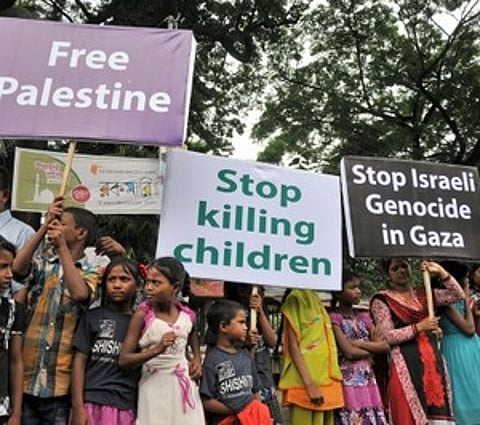

More than 20 years ago, two American academics, Max Singer and Aaron Wildavsky, wrote about what they described as The Real World Order: Zones of Peace/Zones of Turmoil. As is the way with such things, after making a bit of an initial splash it rather disappeared beneath the waves of subsequent scholarship, never to be seen again.
One of the reasons it was relegated to the occasional footnote was that it offended some readers with its troubling central thesis: the world was essentially divided between democratic zones of peace and what they called zones of turmoil and development. The secret to escaping from the chaos and mayhem of the non-democratic world was to adopt the culture and institutions of the successful democracies.
That such countries were generally found in places like Europe and North America, and that the whole agenda smacked of a rather unfashionable form of so-called “modernization” theory, meant that some critics dismissed the book as yet another Eurocentric apologia for American/Western dominance. Some also took exception to the privileging of an effective state as a prerequisite for social order.
Looking around the world at the moment, though, one might be forgiven for thinking that Singer and Wildavsky had a point – whatever their original intentions for writing may have been. The thousands of migrants risking their lives to escape from the chaos, poverty and state failure that seems endemic in much of sub-Saharan Africa in a desperate to reach Europe would be likely to agree with their analysis – if they ever had the luxury of reading it.
AAP/Antonio Melita
The rather discomforting question that the book throws up – if we accept that there’s something in the idea of entrenched divisions in political systems, economic development and life chances, at least – is what do we do about it?
The “we” in this case is the privileged elites that are fortunate enough to inhabit the zones of peace. We are peaceful because we are democrats, the argument goes. Even if social and interstate stability has more complex causes than simply being democratic, the widespread cynicism about democratic politics around the world is unfortunate to say the least.
This is doubly important if we are to reform the zones of turmoil, according to Singer and Wildavsky. One of the reasons they were surprisingly optimistic 20-odd years ago is because they believed that just by existing as democratic success stories, the likes of the US and the European Union would encourage emulation elsewhere.
Sadly, the political systems in both places are becoming bywords for dysfunction.
As a consequence we have the worst of both worlds. Although the “successful” democracies are not the beacons of good governance and prosperity they were once expected to be, they still compare remarkably well the all-too-numerous zones of turmoil.
In the absence of a successful Western model working its didactic magic, we are confronted with the painful dilemma of what to do with the growing numbers of people who – understandably enough – still want to move from one zone to another.
Singer and Wildavsky were prescient on this point, at least. On the way to a more democratically inspired widening of the zone of peace, thousands – perhaps millions – of people would vote with their feet.
No doubt many of us would do precisely the same thing if we found ourselves confronting lives of poverty, violence and uncertainty. I know I would. Thankfully, you and I are not faced with this choice and the risks it entails. But we fortunate few confront another set of choices and dilemmas, which while not as existentially acute, are discomforting, nevertheless.
To borrow another rather dated metaphor: is there enough room on our bit of “lifeboat earth” to accommodate all those who would like to leave steerage and join us on the upper decks? Singer and Wildavsky thought that democracies might be overwhelmed by the sheer numbers of would-be immigrants and “be brought down by their lack of ruthlessness” in defending the politically demarcated boundaries of the zones of peace.
It’s not hard to see why some people were not admirers of the book. Yet in the time since it was written it is the pessimistic parts of the book that look most credible. Geography and history have once again conspired to make Europe the epicentre of this moral and very practical dilemma. It is unfolding on a scale that also puts Australia’s problems with asylum seekers in perspective.
And yet whatever one thinks of the effectiveness or morality of Australia’s turn-back policies, it is hard to imagine them working in Europe. As a result, we may get to see what happens when the arbitrary barriers between zones of peace and turmoil begin to break down. It may not be pleasant spectacle or one with which democracies will find it easy to deal.
This article was originally published on The Conversation. Read the original article.